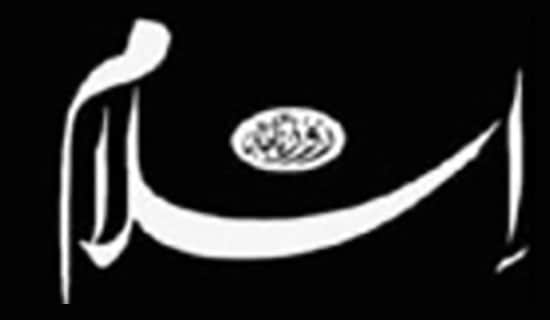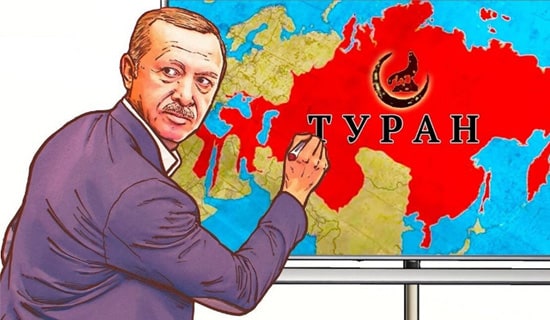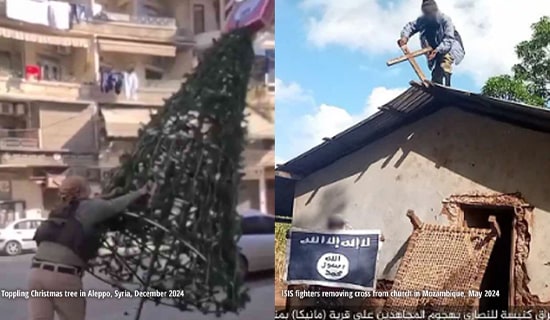The current popular uprising in Iran against the regime began in Tehran on December 27, 2017 in the form of economic protests against the high cost of living, but rapidly spread throughout the country while acquiring a political dimension of protest against the Islamic Revolution regime and especially against Supreme Leader Ali Khamenei, against the regime's policy in Syria, Gaza and Lebanon, against the religious establishment and in favor of political and social freedom.
For a MEMRI TV clip of the protests, click on the player below:
The most striking feature of the protests is that they are taking place throughout the country. Young people are demonstrating in the streets, in universities, and in front of police stations and regime institutions, while calling out anti-regime slogans such as "death to the dictator" "death to Khamenei" and burning pictures of Khamenei and of Qassem Soleimani, commander of the Islamic Revolutionary Guards Corps' (IRGC) Qods Force, who is in charge of implementing Iran's policy outside the country, in Syria, Iraq, Lebanon, Yemen and Gaza. The protestors are also chanting slogans in favor of freedom and social and political rights. It should be noted that their protest is also directed at the reformist camp, which they accuse of playing along with the regime.
Protesters in Iran reject both the reformists and the hardliners.
— Armin Navabi (@ArminNavabi) December 31, 2017
They chant: "Reformists, hardliners, your time is up"
Many people Iranians see the reformists in the same camp as the hardliners who give them false hope to keep quiet.#IranProtests #يحدث_الان_في_ايران #متحد_شویم pic.twitter.com/OB52JUB8Jg
On Friday December 29, the regime deployed armed forces in the capital Tehran to prevent protests on the day of prayer, but prominent protests took place elsewhere, mainly in Kermanshah and other cities, and were violently dispersed by the regime. According to official reports, on Saturday, December 30, three protesters were killed in the city of Dorud in the west of the country (unauthorized sources put the figure at six killed); the regime claimed that protesters had not been killed by its forces but rather by "agents." Reports claimed that anti-regime protests in Ahwaz in southwestern
The demonstrations across

In an attempt to check the popular uprising's continuation, the Iranian regime blocked access to the Internet for a few hours and shut down the Amadnews Telegram channel claiming that Amadnews had urged demonstrators to hurl Molotov cocktails. Social media activity reveals the huge extent of the uprising. In but a single hashtag out of many #تظاهرات_سراسرى there are about 10,000 clips, pictures and other responses.
The regime also warned the demonstrators that it would wield an "iron fist" against them. Clips showing members of the security forces beating passersby with clubs to disperse assemblies, an order to the Basij to use a stern hand in suppressing the protest, and the dispersal of protests using teargas and live ammunition were posted on the web.
Also circulated on the web was an announcement that "in the event that the Internet and Telegram are blocked the assemblies will begin every day in every city at the very same hour as the previous day "until final victory is obtained"

(Source: /twitter.com/Pensylvani/status/947436222892437504, December 31, 2017)
The Regime's Response To The Popular Uprising:
On December 27, 2017, the Supreme Leader Khamenei assailed those criticizing the regime: on the one hand, he attacked former president Mahmoud Ahmadinejad and his associates for the campaign that they waged in recent months to besmirch the Larijani family and primarily the head of the judicial branch, Ayatollah Amoli Larijani. On the other hand, he criticized Kayhan and the other ideological circles for their exaggerated criticism against President Rohani and his government. Khamenei also criticized President Rohani himself, accusing him of acting against the regime.[1]
Iranian Vice President Eshaq Jahangiri, who belongs to the reformist camp, implied on December 29 that members of the ideological camp were responsible for the spread of the protests against Rohani and his government, which quickly became protests against Khamenei and the regime itself: "Those who exploit these issues [i.e., the economic difficulties] as an excuse, and who triggered events that have other dimensions and aspects, must understand that they themselves will be harmed by these events, because when a social movement emerges and takes to the streets, those who gave rise to it will surely be unable to control it and others will jump on the bandwagon."[2]
The regime mouthpiece Kayhan chose to devote the front page of its December 31 issue to the pro-regime demonstrations organized by the regime itself on the anniversary of the suppression of the fitna, i.e., the popular protests of 2009. As for the anti-regime protests, it claimed that "because of the Rohani government," a few protests took place which Western opportunists tried to exploit in order to agitate against the regime. The daily's December 31 editorial likewise claimed that Rohani's mistaken economic and budgetary policy was responsible for the wave of protests. [3]
Assessment
It seems that, so far, the regime has not managed to suppress the protests, which have developed into a large-scale uprising against it, due to its reluctance to use drastic measures such as live gunfire, as was done in 2009. But given the increasing intensity of the protests, their occurrence all over the country and the lack of any readily identifiable leadership, the regime will eventually have to employ considerable force in order to quell them. A development that is currently taking place.
The crisis currently afflicting the regime is rooted in economic factors and the regime's inability to improve the economic situation, due to political reasons. Supreme Leader Khamenei declared that Iran must implement a "resistance economy," and blocked the option of Western cooperation in Iran's economic development. At the same time, the billions of Iranian dollars that were frozen by the West and unblocked following the nuclear deal by the United States, were channeled into Iran's involvement in the regional war zones in Iraq, Syria, Yemen, Lebanon and Gaza and into the continued development of its military capabilities, for instance by constructing new underground cities to house ballistic missiles, by advancing its military industry, etc.
Even if this popular uprising is suppressed by the Iranian regime in the short term, given the absence of any solution to the Iranians' economic woes it is eventually bound to resurface.
One option the regime may resort to in order to rekindle the people's solidarity with the regime despite the absence of any economic improvement is to spark crises or a war in one or more of the regional arenas in which Iran is involved – Israel, Bahrain or Yemen – by means of its proxies in these countries.
Calls for the release of political prisoners and for political freedom in Kermanshah, December 29, 2017:
الان #کرمانشاه ؛ ۸دی
— تمام کننده (@bahramstar) December 29, 2017
شعار مردم: زندانی سیاسی آزاد باید گردد#تظاهرات_سراسرى pic.twitter.com/IdZlFy9KMI
Mass protest in Zanjan:
Large protests in #Iran against the Islamic regime.
— Armin Navabi (@ArminNavabi) December 30, 2017
City: Zanjan#IranProtests #تظاهرات_سراسرى #يحدث_الان_في_ايران #متحد_شویم #IranProtest #FreeIran pic.twitter.com/nNQY4Hgeik
[1] Khamenei's Farsi website, Farsi.khamenei.ir, December 27, 2017.
[2] Tasnim (Iran), December 29, 2017. Jahangari is probably referring calls by the ideologues to demonstrate against the Rohani government capitalizing on recent statements by celebrities who expressed their disappointment with the government.
[3] Kayhan (





